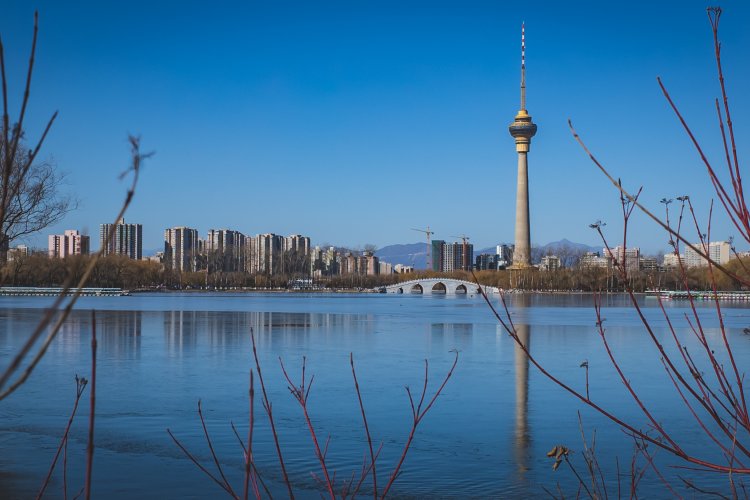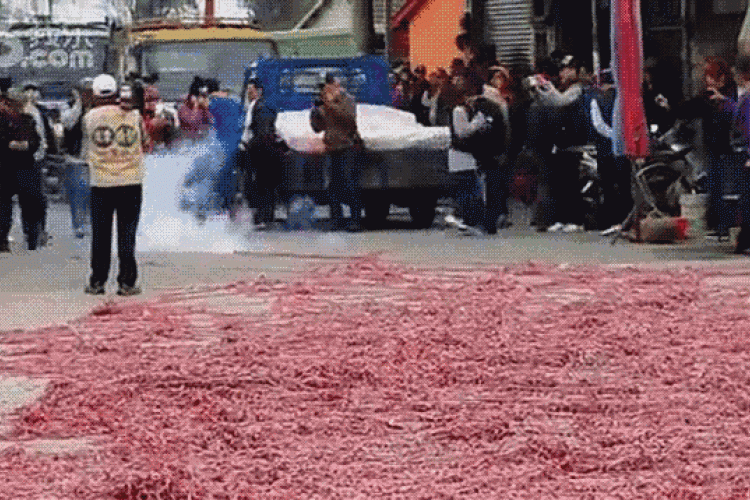A Vintage Whine: Beijing's Bad Air Days
Beijing has always had its environmental challenges. Wedged against the mountains at the top of the North China plain, the city's position owes more to strategic and political considerations than to its climate. Today, the atmospheric effects of a rapidly industrializing (and motorized society) are, of course, a well-documented and oft-lamented part of daily life in China's capital.
There was a time when visitors to Beijing used colors other than beige and grey to describe the city. Walter Burlingame, the 15-year-old son of the US Minister to China Anson Burlingame, in an 1866 letter described the climate in Beijing as, "Beautiful. They have nothing but clear weather from the beginning of winter to the end. The weather is about as cold as we have it at home but we do not feel it so much because the air is so dry and clear."
Other visitors would comment that looking into the city from atop Beijing's high walls gave one the impression of a "bowl of pea soup." With few tall buildings to compete with the trees which grew from every lane and courtyard, Beijing resembled an enclosed forest or park rather than a city.
But even in the 19th and early 20th century, Beijing's air could still force foreign residents to seek shelter and take shallow breaths. The city was – as it still is occasionally now – plagued by sudden dust storms sweeping in from the north.
Thomas Child, writing in 1895, praised the autumn months in Beijing but warned that in the winter, "Great storms of wind from the northwest gather up the dry dust that is everywhere and sweep it along, mixed with small stones, into thick clouds which sting the face and fill the eyes, ears, and nostrils. It covers everything with a thick film and penetrates every box and bundle."
RELATED: Officials Wasting Anti-Pollution Funds and Smog Will Wreck Your Heart
Walter Burlingame, who had such a favorable first impression of Beijing's weather, was finally forced to admit that the climate wasn't always good for a person's health. On one occasion, an excursion out of the city was forced to turn back by the extreme dust and pollution. "It was like a typhoon," he wrote. "The dust was so thick that the whole air was perfectly yellow ... the lamps of Peking were kept lighted all day."
So the next time the sky turns dim and the sun appears as a "dully copper disk in a dust-filled sky" (As a New York Times correspondent described a particularly bad day in 1929) know that you won't be the first foreigner to whine about Beijing's air.
Jeremiah Jenne is a writer, educator, and historian based in Beijing since 2002. He leads educational walks and programs for The Hutong and operates the history, culture, and travel website Jottings from the Granite Studio.
Image: Xinhua (Twitter)
Related stories :
Comments
New comments are displayed first.Comments
![]() lynxlynx
Submitted by Guest on Tue, 12/20/2016 - 17:12 Permalink
lynxlynx
Submitted by Guest on Tue, 12/20/2016 - 17:12 Permalink
Re: A Vintage Whine: Beijing's Bad Air Days
Kind of cynic, your article, regarding the AQI these days, don't you think?
I doubt that pollution in 1866 can be compared to the one in the 21st century,
and a sand or dust storm is certainly sth completely different. Modern pollution
can be avoided, by using filters in coal power stations, or by applying
environmental standards in traffic or daily life, for example. It's a matter of political
will and assertiveness. Banning chuan'r- and bbq-shops obviously doesn't help much.
And that has nothing to do with "whining", it's a matter of common sense and quality
of life.
Validate your mobile phone number to post comments.







